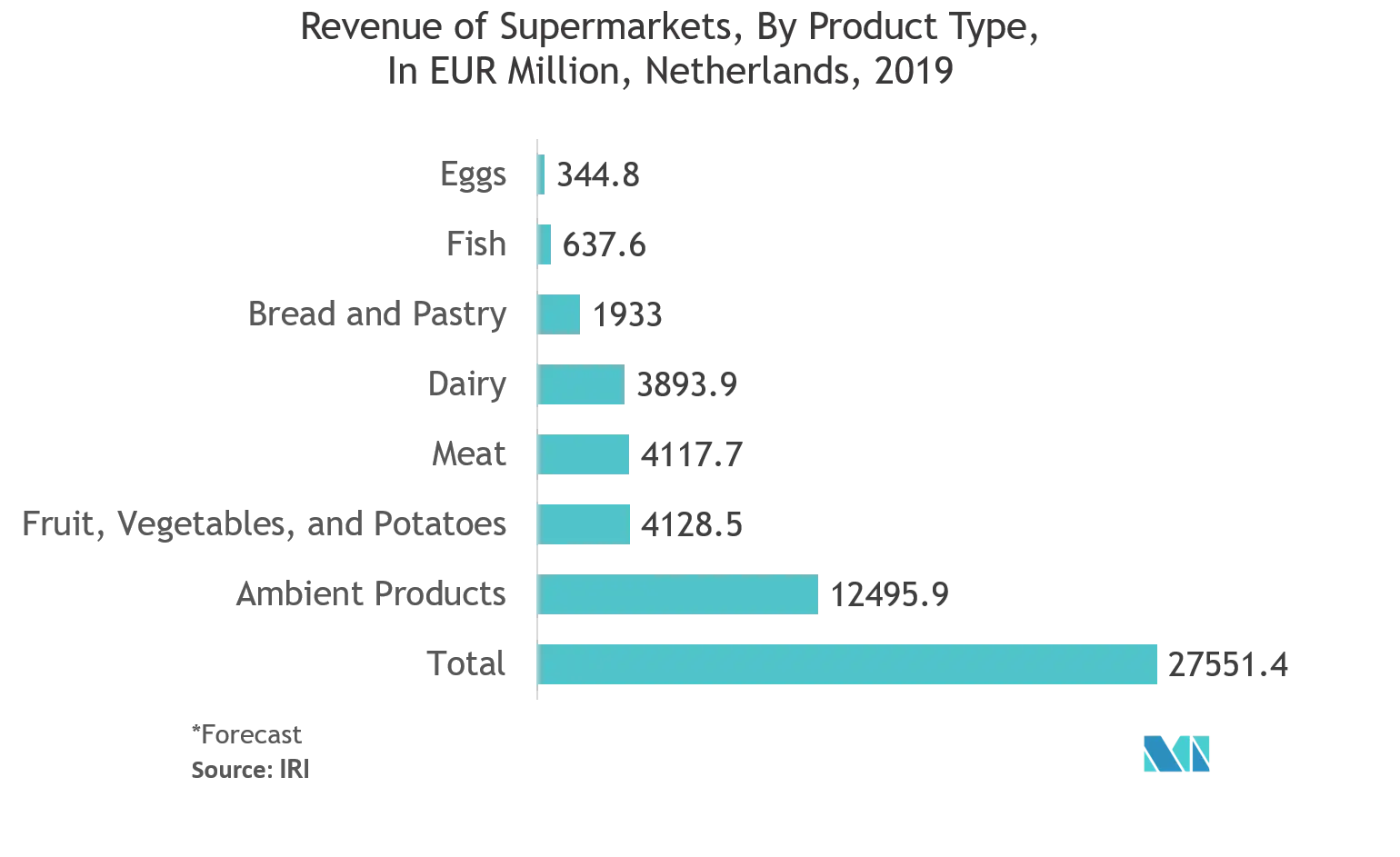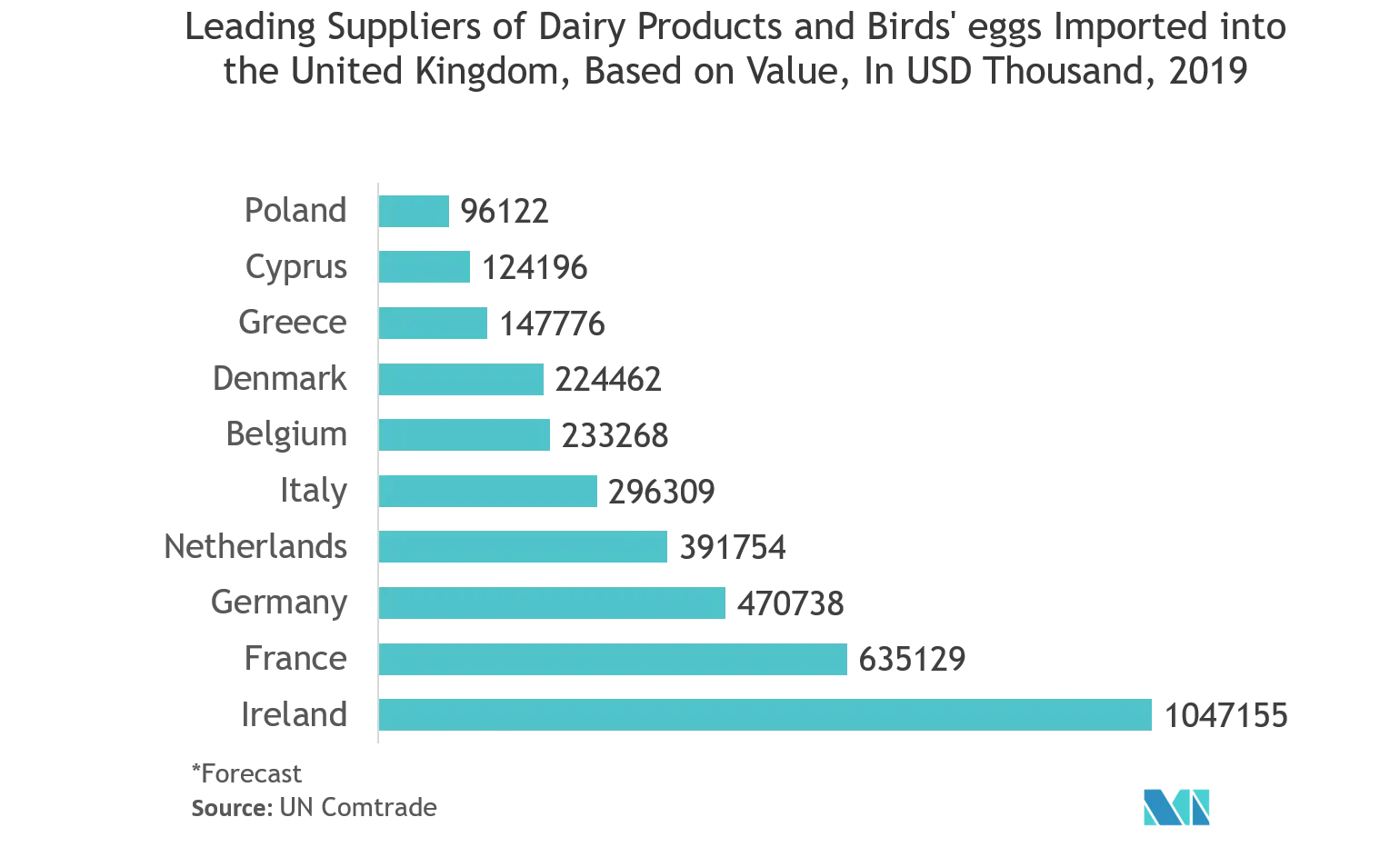Market Trends of Europe Dairy Packaging Industry
This section covers the major market trends shaping the Europe Dairy Packaging Market according to our research experts:
PET is Expected to Witness Significant Growth
- The primary factor behind expanding the sales of dairy products are the different forms of packaging available nowadays. Earlier, milk was available only in gable-topped cartons. At present, milk is delivered in portable, brand-friendly PET bottles, which is an attractive option for increasingly busy consumers.
- Some of the newest milk and drinkable dairy products, such as yogurts and smoothies, are presented in single-serve and sleek PET bottles. While PET bottles allow brands to differentiate themselves from competitors on store shelves, it can be molded into a wide variety of sizes and shapes, thus offering more possibilities than cartons in promoting brand recognition. The increasing demand of dairy products thus is resulting in increased demand for PET packaging.
- For instance, in April 2020, UK ice cream brand Magnum launched its ice cream tubs range in the UK using packaging made with recycled plastic. Following a successful pilot last year, Magnum became one of the first ice cream brand to use recycled polypropylene plastic in packaging. According to the company, the tubs will be rolled out in Europe in 2020 and globally in 2021.
- Also, compared to high-density polyethylene (HDPE) packaging, the glossy appearance of PET bottles with ultraviolet barriers often stand out for extending the shelf life of dairy products, making the glass-like transparency a standard for premium fresh milk.
- Moreover, due to the introduction of high-density polyethylene (HDPE) and polyethylene terephthalate (PET) polymers, plastic bottling applications have increased. High-density polyethylene plastic bottles are the popular packaging choice for fresh juice and milk. For instance, around four billion HDPE milk bottles in the United Kingdom are produced and purchased each year.

United Kingdom is Expected to Grow Significantly
- The market for dairy plastic packaging in the United Kingdom is anticipated to register a significant revenue due to substantial manufacturing facilities. Further, the increase in regulations against the use of plastic is anticipated to lay a significant effect on the market. For instance, in March 2020, the UK Chancellor of the Exchequer revealed that the plastic packaging tax would see companies paying EUR 200 per metric ton of packaging made from less than 30% recycled plastic from April 2022.
- The tax was created to encourage the use of more recycled plastic. The announcement was delivered as part of Budget 2020, which the government of UK describes as the first budget of a new government, the first of a new decade, and the first since the UK's departure from the European Union (EU).
- Among various industries using plastic, the dairy industry is focusing on reducing plastic use. The UK's Food and Farming Minister, Lord Rooker, called for the country's dairy industry to become more sustainable, targeting a 50% reduction in the number of plastics used in milk packaging as a critical goal for 2020. This indicates even more growth for greener packaging in a country that has already shown innovative diversity.
- In the latest instance, Leeds-based waste and recycling sack supplier Cromwell Polythene purchased Derbyshire-based Moorgreen Flexible Packaging, which recycles and manufactures polythene, films, bags, and sacks.
- Moreover, the region has been witnessing a switch in the use of plastic from fossil-based to other types. For instance, Arla, a dairy product packaging firm, switched from fossil-based plastic to bio-based plastic derived from sugar cane or forest waste for the 600 million Arla milk cartons that make them 100 renewable. They also contribute 25% less carbon dioxide into the atmosphere compared to their fossil-based plastic predecessors.

